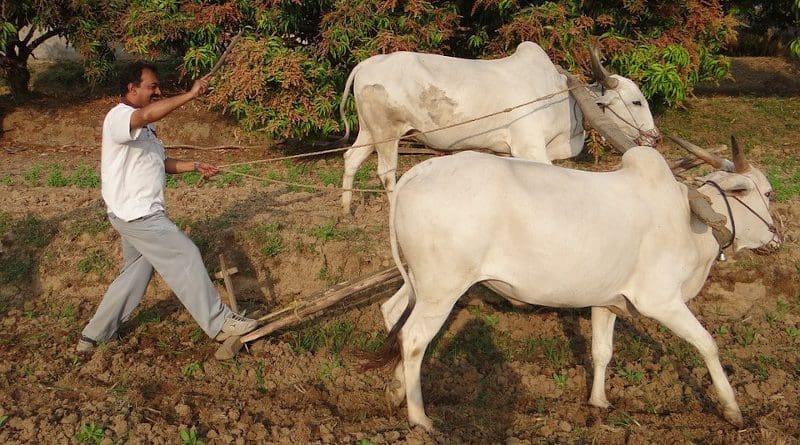Why Did Modi’s Gujarat Fail In Poverty Alleviation, Despite India Emerging As New Hub For Industrialization? – Analysis
According to a NITI Aayug survey report, Gujarat is failing in the reduction of poverty despite emerging as the fastest growing state in industrialization. The ranking of Gujarat in poverty alleviation is even lower than West Bengal – one of the poorest states in the country.
Gujarat ranked 16th with a population living below the Multidimensional Poverty Index (MPI) in 2019-21. West Bengal was above Gujarat, ranking 15th. In Gujarat, the population below MPI was 9.03 percent and in West Bengal, it was 8.60 percent.
Surprises sprung, arguments and counterarguments indulged in a brickbat over Gujarat failing in poverty reduction and trailing behind West Bengal. Opposition parties claims this as a challenge to the Modi model economy for elevating Gujarat as an industrial hub for the country and eradicating poverty in the state.
Why has Gujarat failed to reduce poverty, while it is a hegemony for industrialization? Faster growth in industrialization should have opened up more scope for employment opportunities in the state. In the recently held Global Summit, foreign and domestic investors crowded to invest in Gujarat. It was focused as the only state for potential growth in India and better livelihood in the state.
The fallacy lies with the geographical landscape of Gujarat. It is a adesert prone area. Nearly, 52 percent of the land in Gujarat is covered by desert. This demon strates disadvantage for Gujarat to generate agricultural employment. Given that India is an agro-based economy and a larg part of people make a living in agriculture, the livelihood in Gujarat should have been generated mainly from agriculture.
But, Gujarat is deprived of the scope for generation of agriculture employment and livelihood because of its geographical characteristics. This imparted a cascading impact on agricultural income in the state and potential to reduce poverty alleviation.
Gujarat is restricted by scarce fertile land and irrigation facilities due to widespread of desert in the state, which restricts agrarian employment opportunities. As a result, it also restricted development of agro-based economy.
In contrast, West Bengal has plain and fertile land, giving enough scope for agricultural employment. This led to substantial support to agriculture farmers for their growth in income and push farmers above the poverty level in West Bengal.
Food grains is the main part of agricultural income in India. Gujarat is no different. Gujarat trailed much behind West Bengal, Haryana and Punjab in food grain production due to aforementione desert situation. It’s share in total food grain production for the country lagged at 3.19 percent, against 6.6 percent in West Bengal and 6.49 percent in Punjab in 2021-22.
Land covered under food grain production in Gujarat is half of that for West Bengal and lower than the India average.
Land under irrigation is also less than the all-India average. It is 34.4 percent against the all-India average of 51 percent.
The main agriculture products in Gujarat are cotton and oilseeds like groundnut and sesame. The only income from the desert is in salt production. Rann of Kutch is the largest desert in Gujarat. Salt production is the only means of livelihood for people in Kutch. But, the employment is seasonal. It is from October to June.
Given the land conundrum due to geographical characteristics, Gujarat should focus on the development of non-agriculture sectors to alleviate poverty.
Gujarat emerged as a new face of industrialization in the country. From automobile to hi-tech industries, Gujarat is posing a big challenge in industrial transformation in the country.
It emerged as a new hub for the EV (Electric Vehicle) industry with Maruti to set up the biggest EV plant in the state. The State’s automobile sector is valued at US$3 billion and has become a major exporter of automobile and auto parts.
Gujarat vowed to have the country’s first semiconductor devise manufacturing facility. Tata group will set up semiconductor fab manufacturing facility in the state. Micron, USA has already started construction of plant for assembly, testing and packaging.
The manufacturing growth by big houses in Gujarat, both by domestic and foreign, will unleash greater opportunities for unemployed farmers, stemmed from murky agriculture characteristics, to earn a livelihood and abate poverty in the state.

